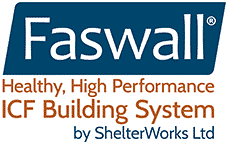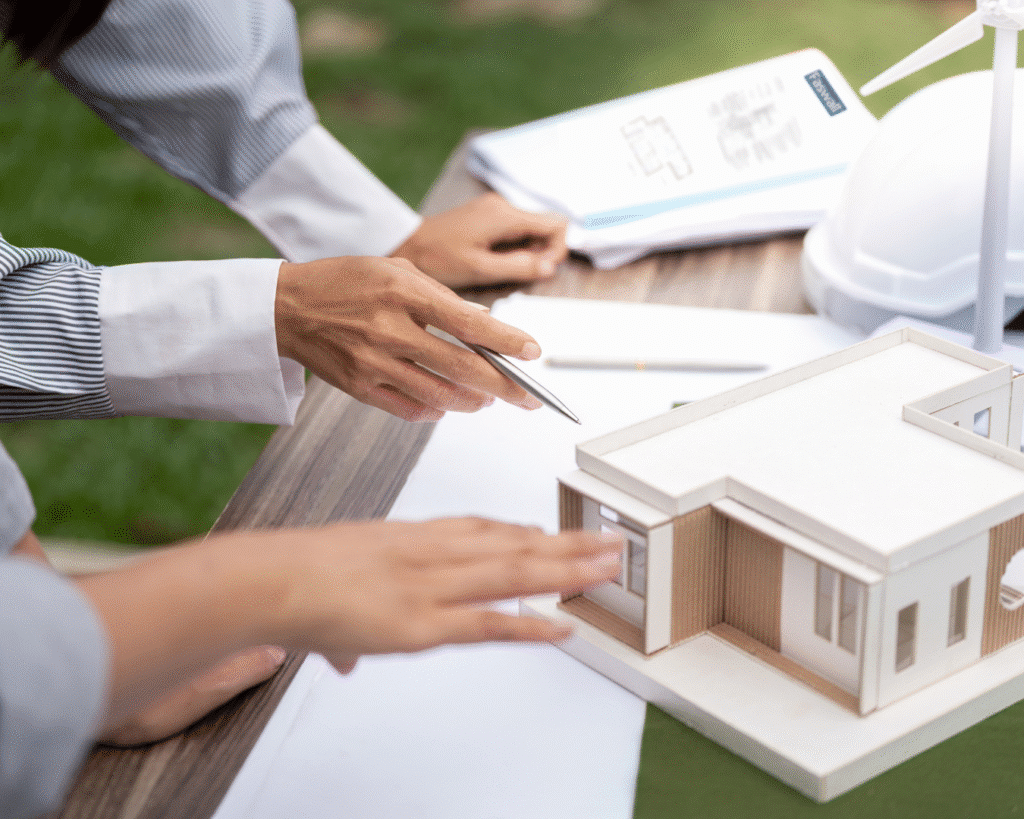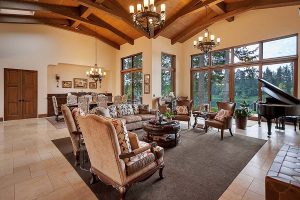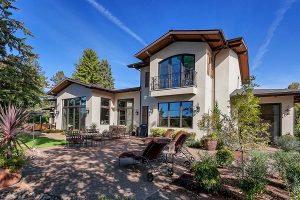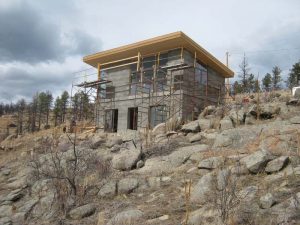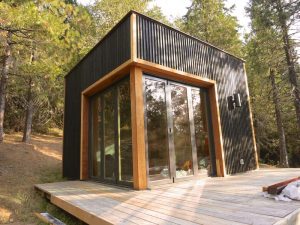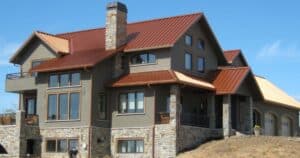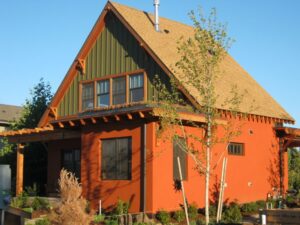As sustainability becomes more than a buzzword, eco-conscious homeowners and builders turn to green building best practices to reduce environmental impact, improve energy efficiency, and create healthier living spaces. Whether you’re starting from scratch, renovating an existing structure, or simply looking for ways to build green, this green construction guide provides a solid foundation for eco-friendly decision-making. From choosing sustainable materials to designing with efficiency in mind, we’ll walk you through the most effective strategies, plus introduce you to Faswall, one of the top green building materials available today.
What is Green Building?
Green building (also called sustainable or eco-friendly construction) refers to the practice of creating structures that are environmentally responsible and resource-efficient throughout their lifecycle; from design to construction, operation, and even demolition. A core focus of any green construction guide is to minimize environmental impact without compromising functionality or comfort.
Key Principles of Green Building:
Here are some foundational principles to guide your approach:
- Energy Efficiency: Reducing the energy needed to heat, cool, and power a building
- Resource Conservation: Using renewable, recycled, or locally sourced materials
- Water Efficiency: Minimizing water waste through smart plumbing and landscaping
- Indoor Environmental Quality: Creating healthier interiors with better air and fewer toxins
- Lifecycle Performance: Designing buildings to last and adapt over time
Benefits of Following Green Building Best Practices:
- Reduced environmental impact
- Improved indoor air quality
- Long-term cost savings
- Increased property value
Green Building Best Practices
Smart Site Planning and Passive Design
Start with a smart layout. Thoughtful site selection and building orientation can dramatically reduce your building’s energy load. Here are a few examples:
- Sustainable Siting: Build near transit and existing infrastructure to reduce your carbon footprint
- Passive Solar Design: Orient windows and walls to maximize sunlight for natural heating and lighting
- Natural Ventilation: Strategically placed windows and vents can naturally cool your home
- Green Roofs: Insulate the building and reduce runoff while adding green space
These methods are among the most impactful ways to build green right from the planning stage.
Energy Efficiency
Reducing energy use is one of the biggest goals and benefits of green building. Here are some ways that you can increase your building’s energy efficiency:
- Insulation: Choose high-quality insulation (like laine minérale or cellulose) to keep your home efficient
- Efficient Windows and Doors: Reduce heat loss with double or triple-glazed options
- Appliances & HVAC: Look for Energy Star-rated systems
- Lighting: Switch to LEDs and integrate natural lighting where possible
- Smart Controls: Use programmable thermostats and smart home systems to reduce energy consumption
Water Conservation
Smart water usage is another essential green building principle. Here are a few examples of principles you can follow:
- Low-Flow Fixtures: Install water-saving toilets, showerheads, and faucets
- Rainwater Harvesting: Collect water for landscape irrigation and other non-potable uses
- Greywater Systems: Reuse water from sinks and laundry for flushing or irrigation
- Drought-Tolerant Landscaping: Use native plants to reduce watering needs
These green construction tips help reduce long-term operating costs while supporting sustainability.
Sustainable Materials
Green materials are those that are renewable, recyclable, low-toxicity, and produced sustainably.
Examples of Green Building Materials:
- Rapidly Renewable Resources: Bamboo, straw, and cork
- Recycled Content: Steel, plastic, & glass
- Natural Insulation: Cellulose (recycled paper), hemp, laine minérale, and cork
- Sustainably Harvested Wood: Certified by FSC or other third-party programs
- Green Concrete: Uses recycled materials like fly ash to reduce carbon emissions
- Faswall Insulated Concrete Forms (ICFs): Blocs de façade are made from 85% recycled mineralized wood chips, naturally resistant to mold, insects, and fire, and have exceptional masse thermique for energy efficiency. They are also vapor-permeable, which helps maintain healthy indoor air quality, and are easy to work with for both contractors and DIY home builders. Faswall delivers both performance and sustainability, making it an ideal choice for walls in high-performance homes and commercial buildings.
Indoor Environmental Quality
Green buildings aim to protect not just the environment, but also the people inside. Building green should always prioritize the health and comfort of the building’s occupants. Here are a few ways to improve indoor environment quality for the people utilizing the buildings:
- Use Low-VOC Products: Paints, adhesives, and finishes should emit minimal toxins
- Air Filtration: Install high-quality filters or purification systems
- Ventilation: Design for cross-breezes and install proper ventilation systems
- Natural Light: Use skylights or large windows to reduce artificial lighting and boost well-being
- Indoor Plants: Improve indoor air naturally with houseplants
Waste Reduction and Lifecycle Management
Sustainable construction means reducing waste throughout the building’s life. Waste reduction starts at the planning stage and continues throughout construction and operation. Here are a few things to consider when working on waste and lifecycle management:
- Efficient Planning: Order only what you need and design with standard sizes
- Reuse and Recycle: Use reclaimed lumber, bricks, or fixtures when possible
- Modular or Prefab Elements: Prefabricated elements help to minimize on-site waste
- Recyclable Materials: Choose materials that can be recycled at the end of their life
Certifications and Standards
For those looking to go the extra mile, green building certifications can provide structure, accountability, and marketability. Here are a few common ones:
- LEED (Leadership in Energy and Environmental Design)
- WELL Building Standard
- BREEAM
- CALGreen (California-specific)
These programs promote green building best practices by the use of green materials in the construction of buildings and may qualify you for rebates or tax benefits.
Green Building Tips for DIY Homeowners
Green building isn’t just for contractors or large-scale developers. As a homeowner, here are some simple green construction tips you can apply today:
- Start with small energy upgrades (LEDs, insulation, weather stripping)
- Use low-VOC paints and sealants
- Shop reclaimed materials at architectural salvage stores
- Install solar panels or small rainwater collection systems
- Choose products like Faswall that simplify eco-conscious construction
Building a Greener Future Starts Today
Whether you’re breaking ground on a new build or upgrading an older home, green building best practices offer a clear path toward environmental responsibility, energy savings, and healthier living. By incorporating energy-efficient systems, sustainable materials, water conservation, and air quality improvements, you’re not just building for today; you’re investing in a better future. And if you’re looking for a green material that checks all the boxes, Faswall is a reliable, proven option that supports both performance and sustainability.
Ready to build green? Explore how Mur de façade and other sustainable solutions can help you to construct a better, healthier, more energy-efficient future.
